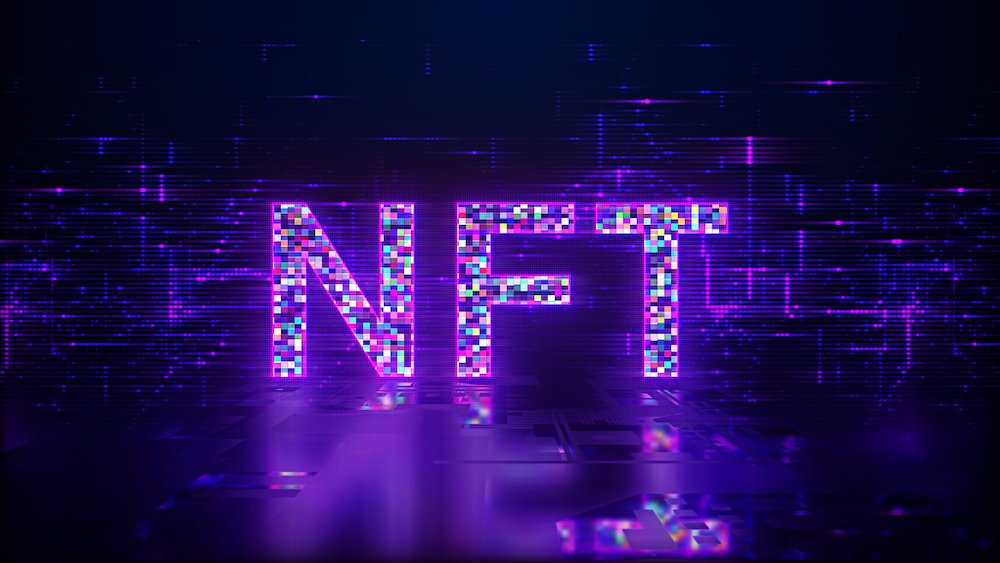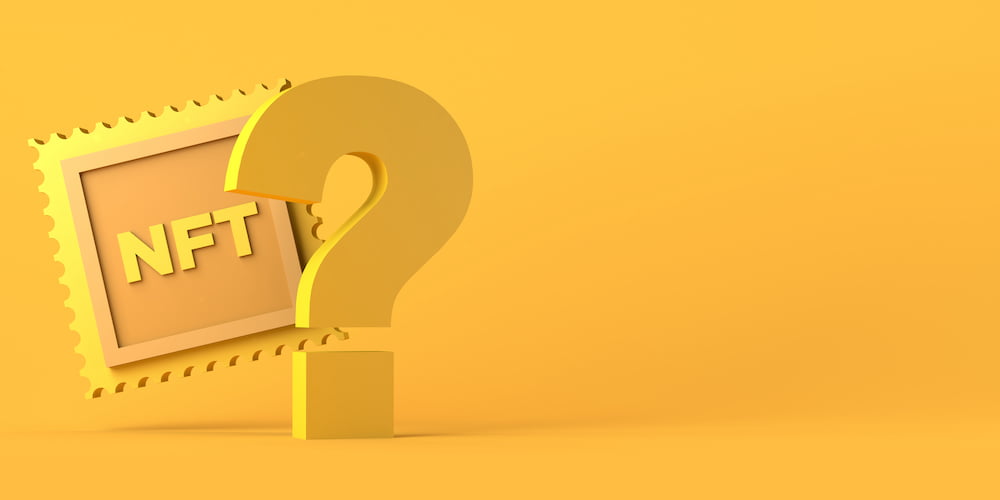Dynamic NFTs transform the digital asset landscape by integrating real-time updates and interactivity. Unlike static NFTs, they can evolve based on external data and user interactions. This article will guide you through what dynamic NFTs are, how they work, and their groundbreaking applications.
Key Takeaways
- Dynamic NFTs differ from static NFTs in that they incorporate programmable and interactive features, enabling them to evolve over time based on external inputs and data.
- The functionality of dynamic NFTs relies on components such as smart contracts, token standards (ERC-721 and ERC-1155), and oracles, which facilitate interactions with off-chain data and enable real-time updates.
- Applications of dynamic NFTs span various sectors, including gaming, digital identity, loyalty programs, real-world asset tokenization, and open-source development, each benefiting from the interactive and adaptive nature of these tokens.
Understanding Dynamic NFTs
Dynamic NFTs represent a significant leap forward from traditional NFTs. A Non-Fungible Token (NFT) is a unique digital token that is stored on the blockchain. It represents ownership of a specific item, whether it is real or digital. Each NFT is distinguished by various data points, including a unique contract address and token ID. However, static NFTs remain unchanged once they are created, limiting their potential for interaction and engagement.
In contrast, dynamic NFTs incorporate programmable and interactive features, enabling these digital assets to evolve over time. They can adapt to external inputs and data, making them more engaging, interactive, and secure compared to their static counterparts. Such advanced functionality broadens the spectrum of use cases, spanning from gamification and business logic embedding to the creation of more dynamic and adaptive digital experiences.

How Dynamic NFTs Function
Various key components underpin the functionality of dynamic NFTs, including smart contracts, token standards, and oracles. These elements work in concert to enable the interactivity and adaptability that make dynamic NFTs so compelling. Smart contracts, in particular, hold a central role as they employ logic to autonomously update the NFT’s metadata in response to outside influences.
Additionally, oracles serve as essential intermediaries, facilitating the exchange of off-chain data with on-chain smart contracts. This integration allows dynamic NFTs to evolve and respond to real-world events and user actions, providing a seamless and interactive experience. We’ll examine each of these components in greater detail to comprehend the true workings of dynamic NFTs.
Token Standards
Token standards are fundamental to the creation and functionality of dynamic NFTs. The most commonly used standards are ERC-721 and ERC-1155. ERC-721 is the original standard for non-fungible tokens, allowing for the creation of unique tokens with distinct properties. However, ERC-1155 introduces a more flexible approach, enabling the creation of semi-fungible tokens within the same contract, which can be particularly useful for certain dynamic NFT applications.
ERC-1155’s ability to manage multiple token types under a single contract makes it a popular choice for dynamic NFTs, especially in gaming and other use cases that require a mix of fungible and non-fungible tokens. Such versatility paves the way for more intricate and interactive digital assets, establishing a foundation for innovative applications and experiences.
Smart Contracts
At the heart of every dynamic NFT lies a smart contract, which is essentially a self-executing program that manages the token’s behavior. These smart contracts manage multiple token types, such as fungible, non-fungible, and semi-fungible tokens, within a single contract, thereby enabling thorough administration of ownership rights and royalty distributions.
One of the standout features of smart contracts in dynamic NFTs is their ability to autonomously update the token’s metadata based on external data. For instance, a smart contract might update an NFT’s metadata in response to changes in the ETH price or other external triggers. This automatic update capability reduces the need for manual intervention, ensuring that the NFT remains current and relevant.
Oracles
Oracles, functioning as a decentralized oracle network, are the linchpins that connect dynamic NFTs to the outside world. Acting as intermediaries, oracles collect, verify, and relay data, allowing smart contracts to access external data sources. This capability resolves the connectivity problem for NFTs, enabling them to interact with real-world data and events.
For example, oracles can interface with various external data sources, such as Web APIs and IoT devices, to provide real-time updates to dynamic NFTs. This real-time data integration enables dynamic NFTs to update their metadata based on external conditions, creating more flexible and adaptive digital assets. By leveraging oracles, dynamic NFTs can offer richer and more interactive experiences.
Use Cases of Dynamic NFTs
Dynamic NFTs are making waves across various sectors, from gaming and digital identity to loyalty programs and real-world asset tokenization. Their programmable and interactive nature allows for a multitude of applications that traditional NFTs simply cannot match. We’ll examine some of the most promising applications of dynamic NFTs.
In gaming, dynamic NFTs can represent evolving characters and achievements, adding a new layer of engagement and revenue potential for developers. For digital identity, they offer secure and verifiable profiles that can adapt over time. Loyalty programs can leverage dynamic NFTs to gamify rewards and gain deeper insights into customer behavior. Additionally, dynamic NFTs can enhance the transparency and trustworthiness of tokenized real-world assets. Finally, open-source development can benefit from dynamic NFTs by rewarding contributors and linking NFTs to project governance.

Gaming
Dynamic NFTs are revolutionizing the gaming industry by introducing new ways to engage players. For instance, they can incentivize kids to stay active by rewarding them with special NFT tokens when they achieve certain milestones like registering enough steps on their Fitbit or getting good grades. These tokens can represent rare in-game powers or items, adding a motivational aspect to both gaming and real-life activities.
Additionally, dynamic NFTs can facilitate fantasy sports competitions by representing real-world sports players or gamers. The value of these digital cards can fluctuate based on the real-life performance of the associated player, with Chainlink oracles sourcing real-time sports data to determine their value. This integration of real-world data with virtual gaming experiences creates a more engaging and interactive environment for players.
Digital Identity
In the realm of digital identity, dynamic NFTs offer a secure and verifiable way to manage personal information. These NFTs can encapsulate various aspects of a user’s profile, from social and professional credentials to records of events attended. This comprehensive digital identity can be plugged into different applications, giving users control over their private data while ensuring authenticity and security.
Future applications might include using digital identities to grant access to physical systems, such as secure buildings or events, based on the verified credentials stored within the NFT. This potential opens up new avenues for using dynamic NFTs in identity management and access control.
Loyalty Programs
Loyalty programs stand to gain immensely from the integration of dynamic NFTs. These NFTs can gamify rewards, evolving as customers achieve certain milestones like referrals or making significant purchases. This gamification adds an element of fun and engagement to loyalty programs, encouraging continued participation.
For example, companies can mint limited-time coupons as NFTs, rewarding consumers based on their participation and attendance data. This approach not only incentivizes desired consumer behavior but also provides brands with deep insights into customer preferences and behaviors through user interactions.

Real World Assets
Dynamic NFTs are poised to revolutionize the tokenization of real-world assets, bringing unprecedented transparency and trust to this process. These NFTs can represent physical commodities such as diamonds or barrels of oil, with their metadata dynamically updating to reflect changes in value or ownership. As a result, the ability to create dynamic NFTs is becoming increasingly important in the world of digital asset management.
For instance, land ownership can be tokenized using dynamic NFTs, with Chainlink oracles functioning as appraisers by incorporating data from IoT devices, drones, and historical records. This real-time data integration ensures that the token’s metadata remains accurate and up-to-date, enhancing the credibility and reliability of tokenized assets.
Open-source Development
Open-source development can benefit significantly from dynamic NFTs by introducing new models for collaboration and contribution. Developers can be rewarded for their work with NFTs, which can be linked to their voting power within the project. This incentivizes contributions and ensures that the most active and valuable contributors have a say in the project’s direction.
Dynamic NFTs provide:
- A transparent and verifiable way to track contributions
- A way to reward developers
- Fostering a more collaborative and motivated open-source community
- More innovative and robust open-source projects
- Driving the ecosystem forward
Creating Dynamic NFTs
The creation of dynamic NFTs encompasses several stages, including:
- Scripting the smart contract
- Minting the tokens
- Defining the behavior of the NFT according to the chosen token standard
- Incorporating oracle interactions for real-time data updates
- Testing the smart contract on test networks to ensure functionality and security before deployment.
Once the smart contract is deployed, the next step is minting the tokens with specified attributes like supply and metadata. We’ll dissect this process in greater detail in the subsequent subsections.
Writing the Smart Contract
Writing a smart contract for dynamic NFTs involves selecting the appropriate token standard, such as ERC-721 or ERC-1155, and defining the NFT’s behavior. This includes specifying how the NFT will interact with oracles to receive external data and update its metadata accordingly.
Incorporating oracle interactions is crucial for ensuring that the NFT can respond to real-time data and external events. This step may involve setting up a Chainlink node and configuring functions within the smart contract to interact with the oracle. Properly defining these interactions is essential for creating a robust and functional dynamic NFT.
Testing and Deployment
Before deploying a dynamic NFT smart contract, it is vital to test it on test networks like Rinkeby or Kovan. These testnets simulate real-world usage without incurring gas fees, allowing developers to identify and fix any issues before the contract goes live.
The testing process entails creating a MetaMask wallet, securing testnet funds, and executing the smart contract in a simulated environment. Once the smart contract passes all tests, it can be deployed on the mainnet, making it accessible for minting and interaction.
Minting Tokens
Minting dynamic NFT tokens involves specifying various attributes, including supply, metadata, and fungibility or non-fungibility based on the chosen token standard. For ERC-1155 tokens, this process includes uploading NFT image links to IPFS URIs and ensuring the NFT contract is Keepers Compatible.
The NFT metadata should include a description, image, and dynamic elements like SVGs, reflecting the NFT’s ability to evolve and respond to external data. Once these attributes are defined, the tokens can be minted and made available for interaction and trading.
Dynamic NFT Examples
The dynamic NFT market boasts several notable examples that showcase the versatility and innovation of this technology. Beeple’s ‘Crossroad’ is a prime example, designed to change based on the outcome of the 2020 U.S. presidential election. This NFT gained significant attention for its unique ability to transform based on a specific external event.
Another well-known example is Cryptokitties, which features evolving characteristics that make each digital cat unique. LaMelo Ball’s NFTs highlight athlete-driven transformations, while Regenerative Resources’ short films exemplify the creative and entertainment possibilities of dynamic NFTs. These examples illustrate the broad range of applications and the potential for dynamic NFTs to push the boundaries of digital art and collectibles.

Benefits of Dynamic NFTs
Dynamic NFTs provide several notable advantages that distinguish them in the digital assets landscape. Their pronounced interactivity renders them more engaging and intriguing for collectors and audiences. For businesses, implementing dynamic NFT smart contracts can create more engaging and interactive experiences for customers, driving deeper engagement and loyalty.
Moreover, dynamic NFTs offer the following benefits:
- They are programmable, allowing creators to define rules for behavior and enabling new use cases in various industries.
- They provide new revenue streams for artists, who can earn royalties from ongoing interactions with their NFTs.
- Game developers can also benefit from royalties from secondary market transactions, making dynamic NFTs a versatile and valuable tool across different sectors.
Challenges and Considerations
Despite boasting numerous advantages, dynamic NFTs also pose several challenges and considerations. Scalability issues in popular blockchains like Ethereum can result in slow transaction times and high gas fees, posing a challenge for platforms. Security is another significant concern, as vulnerabilities in smart contracts and custodial wallets can be exploited by hackers.
Achieving interoperability between different blockchains is technically challenging but crucial for supporting NFTs minted on various platforms. Additionally, the evolving regulatory landscape around NFTs requires continuous monitoring to ensure compliance with emerging laws and regulations. As the ecosystem matures, addressing these challenges will be key to improving the market stability and overall viability of dynamic NFTs.
Future Prospects of Dynamic NFTs
The future outlook for dynamic NFTs is promising, holding the potential to revolutionize digital ownership and forge assets that can be experienced and interacted with in unprecedented ways. As broader adoption and integration of blockchain technology continue, dynamic NFTs could redefine what it means to own a digital asset.
Dynamic NFTs create assets that are not just owned but also experienced and interacted with, opening new possibilities and revenue streams for developers and businesses. This evolution could see dynamic NFTs becoming a staple in various industries, where work plays a significant role, including:
- Entertainment
- Gaming
- Real estate
- Identity management
This will usher in a new era of digital innovation.
Summary
In summary, dynamic NFTs represent a significant advancement in the NFT space, offering enhanced interactivity, engagement, and security compared to static NFTs. They function through a combination of smart contracts, token standards, and oracles, enabling them to evolve and respond to external data. The diverse use cases of dynamic NFTs, from gaming and digital identity to loyalty programs and real-world asset tokenization, highlight their versatility and potential.
Creating dynamic NFTs involves several steps, including writing the smart contract, testing it on test networks, and minting the tokens. Despite the challenges and considerations, the future of dynamic NFTs is bright, with the potential to revolutionize digital ownership and create new revenue streams across various industries. As we move forward, they will likely play a pivotal role in shaping the digital landscape.
Author

Nagi An is a content writer who is passionate about NFTs, web3, DAOs, and DeFi. She's covers a variety of topics about NFT fundamentals.




